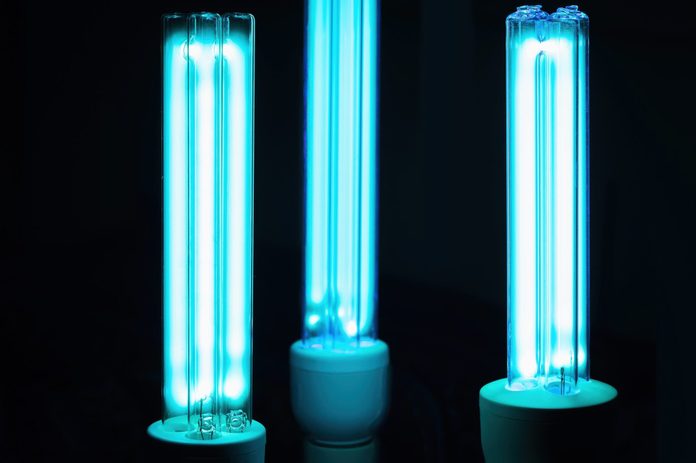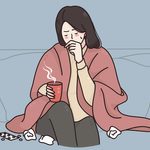Do UV Air Purifiers Really Work?

An UV air purifier claims to clean the air in your home and kill airborne viruses, like Covid-19, but how effective is it?
Air quality concerns and an increase in health awareness due to the Covid-19 pandemic have led to a recent increase in the use of air purifiers. The global air purifier market has grown nine percent since 2015 and is expected to grow at an annual rate of 10.8 percent by 2023, according to a market research report from The Business Research Company.
There are many types of air purifiers on the market that reduce airborne contaminants, like viruses, in your home. This has become a much-sought item since airborne transmission can occur with Covid-19, especially in enclosed and crowded spaces with little ventilation. For example, these include those with shortwave ultraviolet light (UVC light) that claim to kill germs and SARS-CoV-2—the virus that causes Covid-19. But are these air purifiers really effective?
Here’s what to know about UV air purifiers and how they can help with indoor particles and pollutants, and whether they can actually protect you against Covid-19.
(Related: The Best Air Purifiers for Every Room In Your Home)
What is UVC light?
UV, or ultraviolet, is a type of radiation that we most commonly associate with sunlight. According to the Food and Drug Administration (FDA), UVA rays have the longest wavelengths, followed by UVB, and then UVC. When we wear sunblock it’s to protect against the UVA and UVB rays (responsible for sun burning and premature aging)—the UVC rays actually get absorbed by the ozone layer and don’t make it down to us here on Earth. We can produce UVC rays, however, with a lamp or a laser.
Can UVC light kill germs?
UVC lamps have long been used to kill bacteria and viruses and are often called germicidal lamps, according to the FDA. A study published in the journal Public Health Reports notes a common way to use UVC to disinfect the air is with something called “upper room” ultraviolet germicidal radiation (UVGI), where lamps are mounted on the ceiling and clean the air near the ceiling before it is cycled back down below. In the 1930s, this type of air purification was successful in preventing the spread of measles in schools in Philadelphia.
Currently, there is renewed interest in UVC as it has the potential to kill SARS-CoV-2. A study published in the American Journal of Infection Control found that a high viral load of SARS-CoV-2 was eliminated after nine minutes of UVC exposure.
How does a UV air purifier work?
There are a number is different things floating around in the air in your home: allergens like dust and pollen, as well as pollutants, bacteria, and viruses. “UVC air cleaning is particularly focused on biologicals. So you’re not removing particles, you’re not targeting any gases. You’re just trying to inactivate microbes,” says Emily Jones, a researcher in the Healthy Buildings program at the Harvard T.H. Chan School of Public Health. Jones has previously investigated the effect of portable air cleaners on reducing the risk of Covid-19.
Although UVC can be used on its own in institutional settings, like hospitals, to kill germs, when it comes to your home, you’ll most likely find it in combination with an air purifier that also has a filter—for example, a high-efficiency particulate air (HEPA) filter. It could be on a plug-in portable air cleaner, or as part of a whole-home air cleaner that’s connected to your HVAC system. “After the air flows through the HEPA filter, the UV light shines on the air that’s being expelled from the filter before it’s expelled and recirculated into the room,” explains Jones.
(Related: If You Have Winter Allergies, Here’s Why and What Experts Recommend)
Are UV air purifiers effective?
Although UV air purifiers are full of promise, the reality is they are unlikely to be that effective, says Patricia Fabian, an associate professor of environmental health at Boston University’s School of Public Health. That’s because even though UVC light has the potential to kill bacteria and viruses, in a typical portable air cleaner you might buy at the store, it’s unlikely the air will be exposed to the UVC light long enough to make an impact. “You need to have a virus or bacteria spend enough time in the UV for it to be effective,” says Fabian.
That’s not to say the air cleaner unit will not be effective though—it’s just more likely that it’s the filtration system that’s removing the virus and bacteria from the air, and not the UVC, adds Jones.
Are UV air purifiers dangerous?
Jones points out that not only are UV air purifiers unlikely to be effective, they could also be dangerous. For one, if they are not properly coated, they have the potential to produce ozone, which is a gas that’s made up of three oxygen atoms (O3). This can actually be a harmful air pollutant.
According to the Environmental Protection Agency, ozone can cause chest pain, coughing, throat irritation, and airway inflammation. Children, people with asthma, and older adults are more likely to be negatively affected by ozone.
“Also, if the UVC light is not totally contained, it can cause skin irritation,” says Jones. If you have an air filter with a UV setting, you can avoid issues by simply turning it off.
What else can I use to filter viruses?
If you’re worried about bacteria and viruses in your home, Jones recommends a plug-in portable air cleaner with a HEPA filter. These types of filters remove 99.97 percent of dust, pollen, mold, bacteria, and any airborne particles with a size of 0.3 microns. “If you’re talking about SARS-CoV-2, the virus naked is 0.1 microns, which is very small. But the virus doesn’t just fly around naked in indoor environments. It’s flying around in saliva. So the size a particle that we care about is more in the one to 10-micron range,” says Jones.
Remember too, that there are other ways to get clean air in the home. “It’s about refreshing the air in your house, which can be as simple as opening windows,” says Fabian. “Good ventilation doesn’t need to be just about an air cleaner.”
Next: 8 Best Light Therapy Lamps on Amazon for Seasonal Affective Disorder




